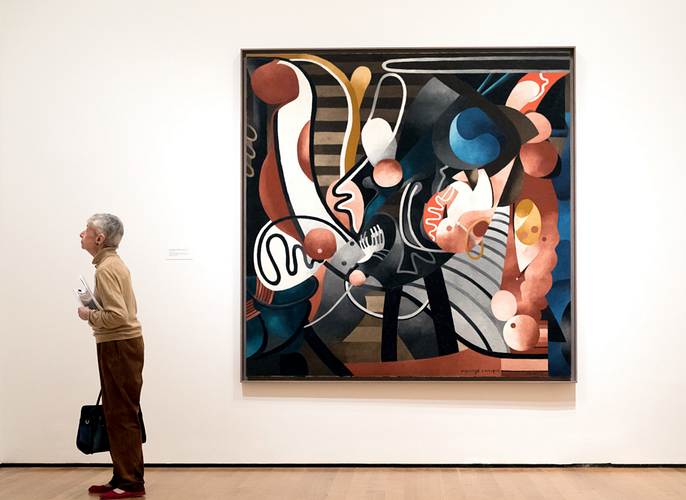The reports coming in from the Francis Picabia exhibition at MoMA makes it seem like museum’s unpopularity problems are a thing of yesteryear. So glowingly reviewed is the Picabia exhibition that even Roberta Smith, the hard-to-impress New York Times art critic, is singing its praises. Smith writes about Picabia’s background, notably his extreme wealth and lifestyle as a playboy. He sounds utterly unlikeable in person. Read Smith in partial below, in full via New York Times.
Make way for Francis Picabia, one of the grandest, most mordant exemplars of early modernism, and perhaps the least familiar. The Museum of Modern Art — having for decades drummed the artistic feats of Picasso, Matisse, Mondrian and Duchamp into cultural consciousness — has finally rolled out the red carpet for this capricious, prolific, subversive fellow traveler.
The Modern didn’t even acquire a Picabia painting until 1954, and this is its first substantial exhibition devoted to him. One imagines that the artist was too slippery or contradictory for the museum, too much of a prankster and publicity hound. Born to wealth, he never struggled as an artist and had a reputation, partly intended, as a playboy. He made important contributions to both Cubist painting and its nemesis, Dada, with its art-barbed hijinks, and refused to cultivate a personal style that deepened with time. Instead he toyed with kitsch and calendar art, and based paintings on found photographs. When he returned to abstraction at the end of his life, he tried several styles. But lately — when multiple mediums and styles are increasingly the artistic norm — Picabia’s stature has grown. His work seems more alive today than that of any artist of his cohort, even Duchamp.
“Francis Picabia: Our Heads Are Round So Our Thoughts Can Change Direction,” which opens on Monday, amasses some 241 works into a full-dress retrospective that thoroughly examines the artist’s contributions to Cubism and Dada. It includes “Entr’acte,” the avant-garde film he made in 1924 with René Clair, and his contentious series of figurative paintings from the ’20s, ’30s and ’40s. Borrowing from art history, soft-core pornography and commercial art, they presage Pop Art, appropriation art and Neo-Expressionism.
Born in Paris in 1879, Picabia was the only child of a French mother and a Cuban-born Spanish father whose combined fortunes (French mercantile; Cuban sugar) meant that he never had to do anything but make art, which they encouraged. He worked as a painter, poet, graphic designer, filmmaker, set designer, publisher, editor and orchestrator of exhibitions, events and performances — some of which he helped pay for — and was also known as a lover of gambling, yachts, fast cars and speed in general, as well as women. He even seems to have painted and drawn fast, with a kind of impatient, unfussy glee. Though eminently physical as a painter, he had little time for masterly, recognizable brushwork. The exhibition includes a partial re-creation of a solo show he had in Barcelona in 1922, centering on a series of works on paper whose daunting variety makes explicit his refusal to commit.
As promiscuous in life as in art, Picabia almost always had a wife and a mistress, or two mistresses, who tended to get along. He traveled widely, spending long periods living and working in New York, Switzerland and the South of France as well as Paris, where he died, in 1953, in the house he was born in.
*Francis Picabia’s “Comic Wedlock” at the Museum of Modern Art. Credit 2016 Francis Picabia/Artists Rights Society (ARS), New York, via ADAGP, Paris; Agaton Strom for The New York Times
